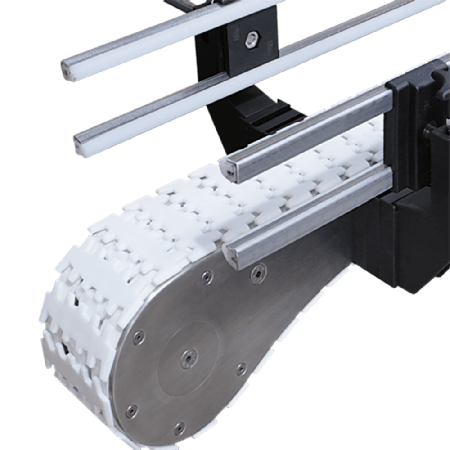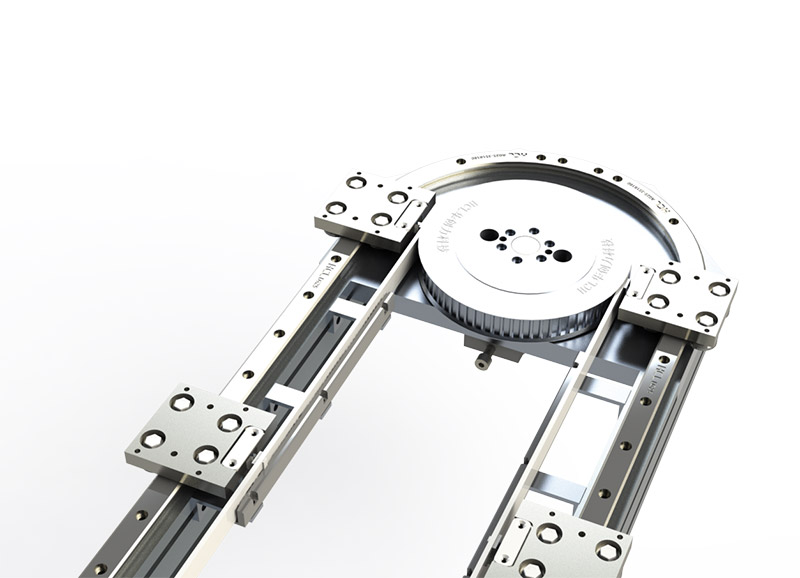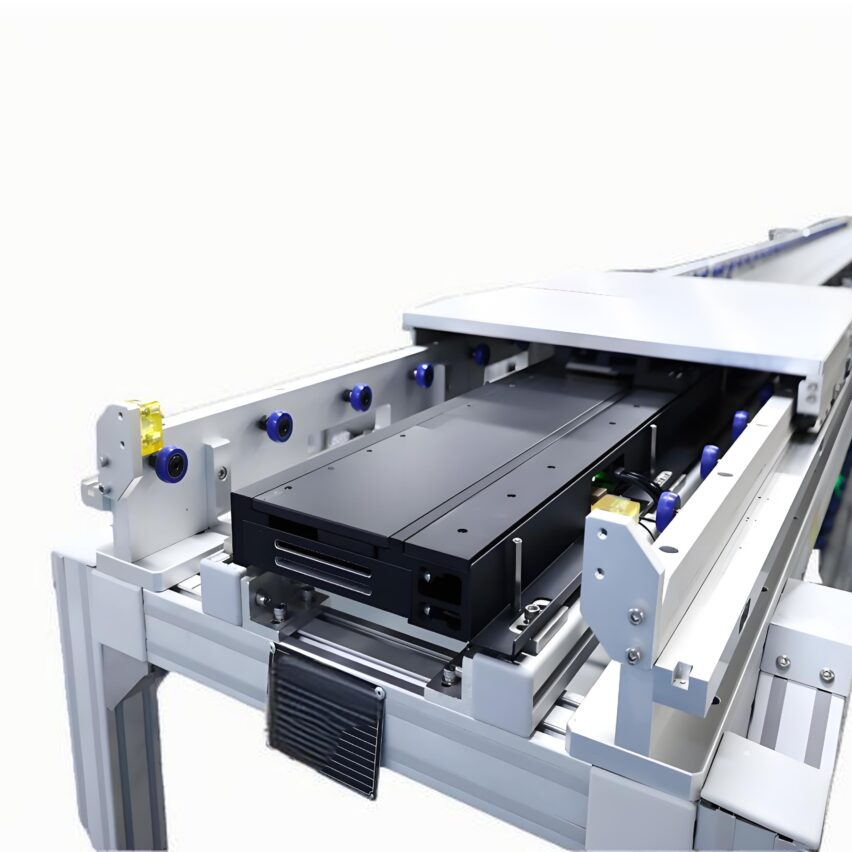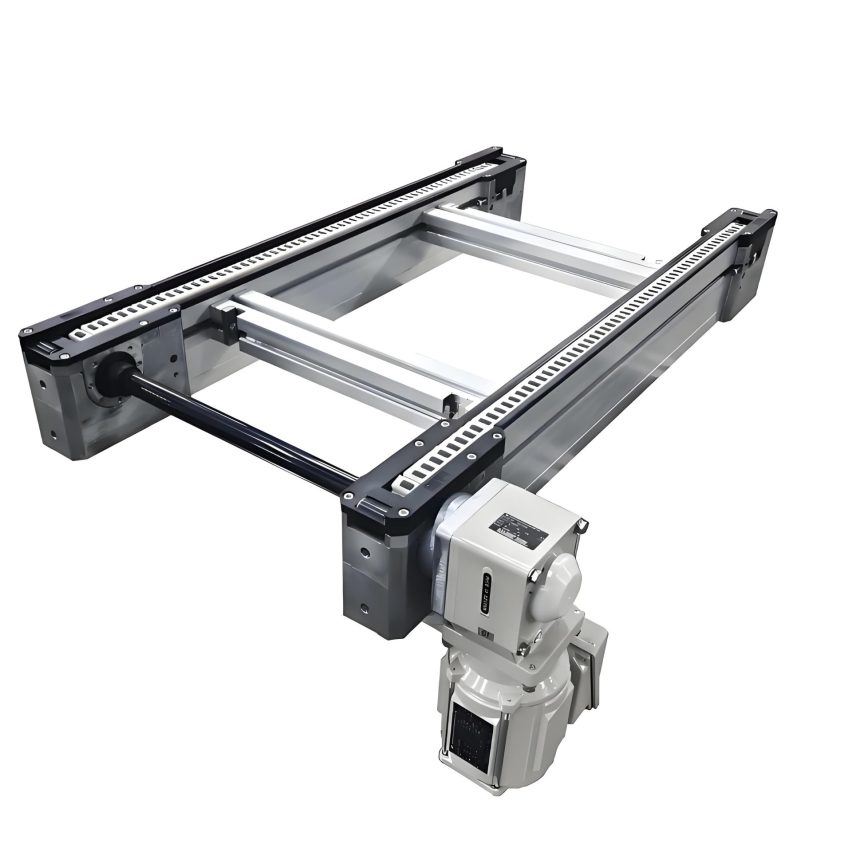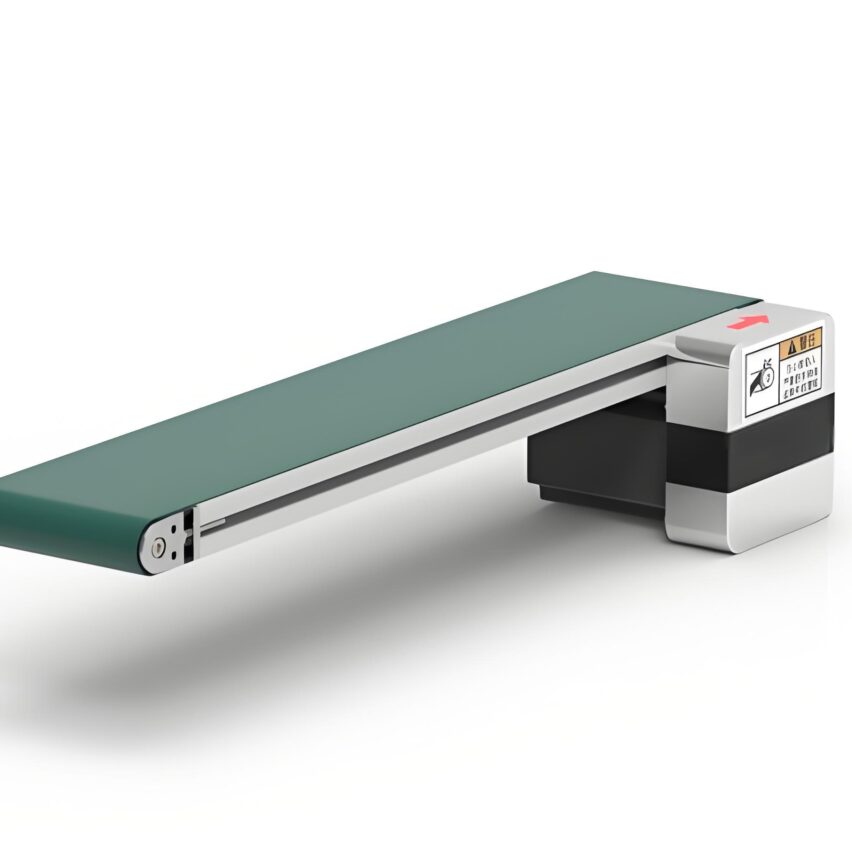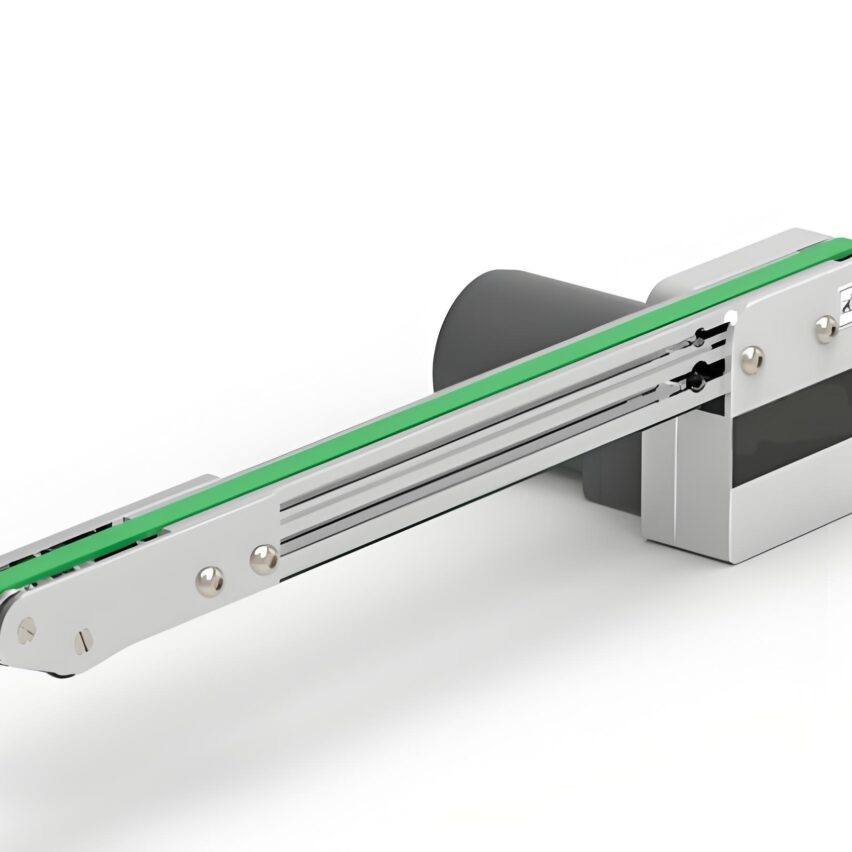I. Differential Principle: The Physical Code of the Mechanical Lever
The core mystery of the speed multiplier conveyor line isDesign of diameter difference between roller and roller. When the chain runs at a constant speed with speed ν, the actual moving speed of the work plate can be up to the chain speed of the2.5 to 3 times, whose physical formula is:
Vtooling board
= ν × (1 + R/r)
(R: roller radius, r: roller radius). For example, when R/r=1.5, the speed of the work plate is 2.5 ν. Suchmechanical leveraged incremental speedNo need to increase the power of the motor, but can significantly improve the efficiency in long-distance conveying, especially suitable for electronics, automotive and other continuous assembly scenarios.
personal insight: The essence of the multiplier chain is"Energy amplifier" in the mechanical field--Converts small displacements into large displacements through geometrical structure. In harsh environments such as dust and high temperatures, its reliability far exceeds that of electronic speed control solutions such as magnetic levitation, confirming the industrial philosophy of "simplicity is reliability".
II. Anatomy of a structure: precision synergy of seven modules
1. Chain system: balance of precision and durability
| typology | octave ratio | Applicable Scenarios | innovative design |
|---|---|---|---|
| Engineering Plastic Chain | 2.5 times | 3C electronic assembly | Anti-static coating to avoid circuit breakdown |
| Steel Roller Chain | 3 times | Automotive Engine Transport | 150°C high temperature resistant coating |
| Double Pitch Accumulator Chain | 2.5-3 times | mixed flow production | Localised line stoppages do not affect overall operation |
2. Intelligent evolution of workplace panels
- Gradient material structure: Surface layer of 0.5mm silicon carbide coating for enhanced wear resistance, core layer filled with aluminium honeycomb (density 0.28g/cm³), load-bearing nodes reinforced with titanium alloy (180MPa compressive);
- Dynamic power supply systems: Copper alloy electrode + graphene contact layer (resistance 0.5Ω), which extends the life of carbon brushes by 3 times compared to traditional carbon brushes;
- data-termination: RFID inlays store process parameters, compressing automotive mixing line changeover time from 4 hours to 45 minutes.
3. Drive and control centre
- Double sprocket synchronised drive: Centre distance error ≤0.5mm, eliminating the risk of jumping chain;
- blockchain traceability: Record the stop position deviation and train the AI compensation model for a cumulative accuracy improvement of 40%.
III. Technical parameters: precise adaptation for industrial scenarios
Steel doubler chains need to be engineered to strictly match the needs of the scenario:
- spatial arrangement::
- The length of single-section drive is ≤40m (anti-sagging chain), and 10~15m is recommended for small production lines;
- The width of the wire body is 250~900mm (the automotive industry mostly uses more than 600mm wide body design);
- mechanical system::
- Heavy-duty scene with 2.2kW gear motor + heavy hammer tensioning device (droop ≤ 2% pitch);
- Three speed regulation modes: 0.3m/s start → 1.0m/s run → 1.5m/s return;
- safety protection::
- Emergency stop button every 5 metres (response 0.2 seconds), sheet metal shield opening ≤ 12mm;
- Enclosed guideway for high dust environments + graphene dry lubrication.
IV. Application Scenarios: Three Battlegrounds for the Efficiency Revolution
▶ Consumer Electronics Field
Dongguan mobile phone factory adopts triple speed chain after:
- The assembly beat was compressed from 120 seconds per unit to 78 seconds;
- The work board accumulation function reduces the staging area by 40%;
- Anti-static design yield improvement of 2.3%.
▶ Automotive Manufacturing Innovation
- New energy battery packs: 120°C resistant rails address thermal management testing needs;
- Engine assembly: double sprocket drive to carry 500kg cylinder block, synchronisation accuracy ±0.5mm.
▶ Upgrading of food and medicine
- 304 stainless steel chain plate: resistant to CIP acid and alkali cleaning, microbiological residues <5CFU/cm²;
- Cold chain adaptability: -20℃ ambient modulus of elasticity fluctuation ≤3%, guaranteeing smooth conveying.
V. Intelligent control: from mechanical transmission to cognitive decision-making
Triple precision stop control system::
- physical buffer layer: Hydraulic shock absorber absorbs 90% impact energy;
- optoelectronic sensing layer: The laser rangefinder dynamically adjusts the blocking cylinder pressure;
- Data Decision Layer: Temperature/humidity/load data linked lubrication AI, oil fill cycle optimisation 30%.
digital twin preview::
- Tesla's Shanghai factory virtually debugs multiplier chain to dock with AGVs as collision risk drops by 90%;
- Energy model optimisation resulted in annual power savings of 120,000 kWh on a single line.
Self-questioning: a breakdown of the core issues
Q: Why are speed doubler chains better than belt conveyors for heavy-duty scenarios?
Answer.Essentially a combination of structural strength and precision--
- carrying capacity: Steel chain single pallet load 2000kg (belt conveying usually ≤500kg);
- environmental adaptation: -20℃~150℃ stable operation, the belt is easy to be brittle at low temperature;
- Precision control: ±0.05mm hard positioning vs belt ±5mm drift.
Q: How can I protect my life in a high dust environment?
Answer.Three defence technology combinations::
- Enclosed rails: Side sliding cover design blocks dust intrusion;
- dry lubrication: Graphene coatings to replace lubricants;
- Sprocket self-cleaning: Scraper unit removes dust build-up from the rollers in real time.
Q: Will it be replaced by maglev technology?
Answer.Complementarity, not substitution--
- Advantages of Speed Chain: 1/6th of the cost of a magnetic drive (120/surname Mivs(800/m), heavy load emergency stop mechanical suction can be more reliable;
- limitations of magnetic levitation (ML): Positioning misalignment under strong electromagnetic interference and 3 times higher maintenance costs.
Exclusive dataA home appliance giant invested 200 million to transform the steel doubling chain system, four production line restructuring was completed in three years, and the cost of introducing new models was reduced by 60%. this confirms that -Reconfigurability of mechanical systems is more strategically valuable than absolute speed in heavy-duty, highly variable environments.




